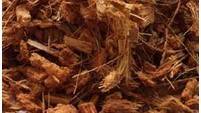Some growers in North America are showing an increasing interest in using a Sphagnum peat-coir growing medium for various crops and pot sizes. This interest is in part due to the beneficial properties of combining Sphagnum peat moss with coir. Peat-coir growing media can be formulated with different grades of peat (course, grower grade or fine grade) and coir (chunk coir to coir fiber and pith) to create the ideal physical properties for specific growing applications. Thus, peat-coir growing media are being used for plugs, bedding plants, vegetables, herbs, nurseries, baskets and large container production. Understanding the benefits of a peat-coir growing medium and the effects on plant growth can help growers get better results both at their greenhouses and for the end consumer.
Benefits and Uses
Functionally, a growing medium has to provide plants with basic aeration and water needs. The combination of peat and coir as the main components in a growing medium can enhance the ability of the media to fulfill the air and water needs.
Coir has a granular structure that, when added to Sphagnum peat moss, can contribute more total pore space and water-holding capacity when the root zone is fully saturated, generally resulting in increased rooting and germination. Grower trials have shown improved rooting in peat-coir growing media as compared to basic peat-based growing media. Coir has no waxy cutin to repel water as Sphagnum peat moss does, thus when combined with peat it acts as a natural wetting agent to assist in the rewetting process of peat moss. Therefore, when the growing medium dries out, there will be minimal shrinkage from the container walls so that water does not channel down the sides during irrigation.
Coir’s high lignin to cellulose ratio helps the peat-coir media to decompose more slowly so there is significantly less shrinkage in containers over the life of the crop and maintains a favorable air-to-water balance in the root zone. Coir also has a higher starting pH of 4.9-6.5, so there is less need to add limestone to the peat-coir growing medium.
Salts
Coir traditionally has been deemed as having excessive salts coming from potassium, chloride and sodium. This is true, but most of these salts are leached out before incorporation into the growing medium by washing the coir with water. Coir salt levels are typically less than 1.0 mmhos/cm (S.M.E. analysis) and when mixed with Sphagnum peat moss it only contributes salt levels of 0.2-0.5 mmhos/cm.
As previously stated, peat-coir growing media are being used for the production of plugs, bedding plants, vegetables, herbs, nurseries, baskets and large container production. Growers especially like them as they enhance the ability of their baskets and large containers to flourish in hot, dry climates and under stressful conditions placed upon them by retailers and consumers. The uses of peat-coir growing media are becoming more important for growers and consumers as formulations are developed to address specific crop cultural needs.
